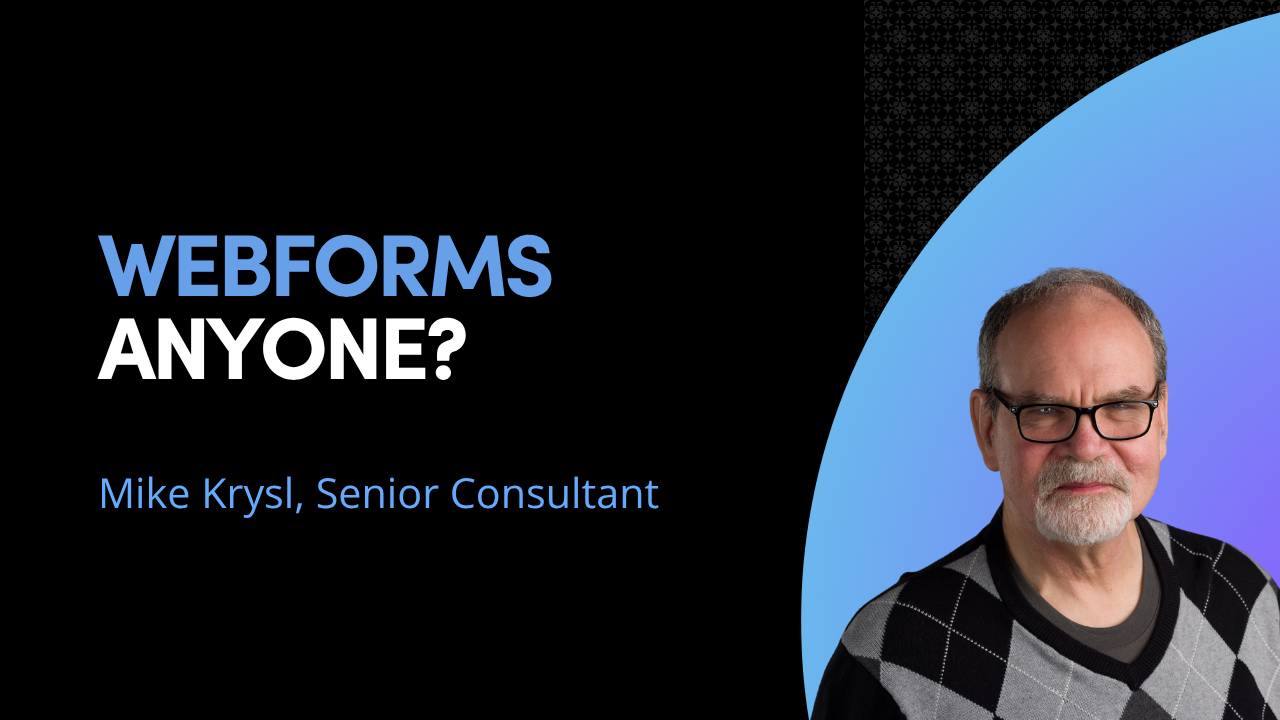
In a world obsessed with the latest JavaScript frameworks and cloud-native architectures, admitting you still work with WebForms feels like confessing to using Internet Explorer as your daily browser. But here’s the thing: WebForms isn’t just surviving—it’s quietly powering critical business applications across industries.
The Enduring Appeal of WebForms
Recently, I encountered a manufacturing company running their entire inventory management system on a WebForms application built in 2008. Not only was it still functional, but it was handling thousands of transactions daily with remarkable stability. This got me thinking about why certain technologies persist long after the industry has moved on.
WebForms offers something that modern frameworks often overlook: simplicity. The event-driven model, while criticized for its complexity, provides an intuitive programming model for developers coming from Windows Forms backgrounds. You drop controls on a page, wire up events, and things work.
When WebForms Makes Sense
Despite what the internet might tell you, there are legitimate scenarios where WebForms remains a viable choice:
1. Existing Infrastructure
If you have a stable WebForms application that meets business needs, the cost of migration often outweighs the benefits. “If it ain’t broke, don’t fix it” isn’t just stubbornness—it’s sound business logic.
2. RAD Development for Internal Tools
For rapid application development of internal business tools, WebForms can be surprisingly efficient. The drag-and-drop designer and rich server controls enable quick prototyping without the ceremony of modern SPA setups.
3. Report-Heavy Applications
Applications that primarily generate reports and forms benefit from WebForms’ server-side rendering and built-in controls like GridView and Repeater.
Modern Approaches to WebForms
If you’re maintaining or building WebForms applications, you don’t have to be stuck in 2005:
// Use modern C# features
public partial class ProductList : System.Web.UI.Page
{
protected async void Page_Load(object sender, EventArgs e)
{
if (!IsPostBack)
{
var products = await GetProductsAsync();
ProductGridView.DataSource = products;
ProductGridView.DataBind();
}
}
private async Task<List<Product>> GetProductsAsync()
{
// Modern async/await patterns
using var httpClient = new HttpClient();
var response = await httpClient.GetStringAsync("/api/products");
return JsonSerializer.Deserialize<List<Product>>(response);
}
}Hybrid Approaches
You can modernize WebForms applications incrementally:
<%-- Progressive enhancement with modern JavaScript --%>
<asp:GridView ID="ProductGrid" runat="server" CssClass="modern-grid">
<Columns>
<asp:TemplateField HeaderText="Actions">
<ItemTemplate>
<button onclick="editProduct(<%# Eval("Id") %>)" class="btn-edit">
Edit
</button>
</ItemTemplate>
</asp:TemplateField>
</Columns>
</asp:GridView>
<script>
// Modern JavaScript for enhanced UX
function editProduct(id) {
fetch(`/api/products/${id}`)
.then(response => response.json())
.then(product => showEditDialog(product));
}
</script>The Skills Transfer
Here’s what I’ve learned: WebForms developers often possess valuable skills that translate well to modern development:
- State management: Understanding ViewState leads to better state management in SPAs
- Server-side rendering: Concepts that are now trendy again with Next.js and similar frameworks
- Event-driven programming: Useful for understanding reactive programming patterns
- Performance optimization: Managing large datasets and postback optimization teaches valuable lessons
Modernization Strategy
If you’re tasked with modernizing a WebForms application, consider this approach:
- Audit and Document: Understand what you have before you change it
- API-First: Extract business logic into Web APIs
- Progressive Replacement: Replace pages incrementally rather than all at once
- Shared Components: Build a component library that works across both old and new pages
// Extract business logic to services
public class ProductService
{
public async Task<List<Product>> GetProductsAsync(ProductFilter filter)
{
// Business logic here
return await _repository.GetProductsAsync(filter);
}
}
// Use in both WebForms and modern controllers
protected async void LoadProducts()
{
var service = new ProductService();
var products = await service.GetProductsAsync(new ProductFilter());
// Bind to WebForms controls
}The Lesson
Technology choices aren’t just about technical merit—they’re about business context, team skills, and practical constraints. WebForms might not be the future, but it’s a reminder that sometimes the “outdated” solution is still the right solution.
Before you dismiss legacy technologies, ask yourself: What problems do they solve well? What can we learn from their longevity? Sometimes the answer isn’t to replace everything with the latest and greatest, but to understand why certain approaches endure.
In an industry that chases shiny objects, there’s wisdom in recognizing that boring, stable technology often powers the most critical systems. WebForms taught us valuable lessons about web development, and those lessons remain relevant regardless of the framework we use today.
Ready to Build Something Amazing?
Let's discuss how Aviron Labs can help bring your ideas to life with custom software solutions.
Get in Touch